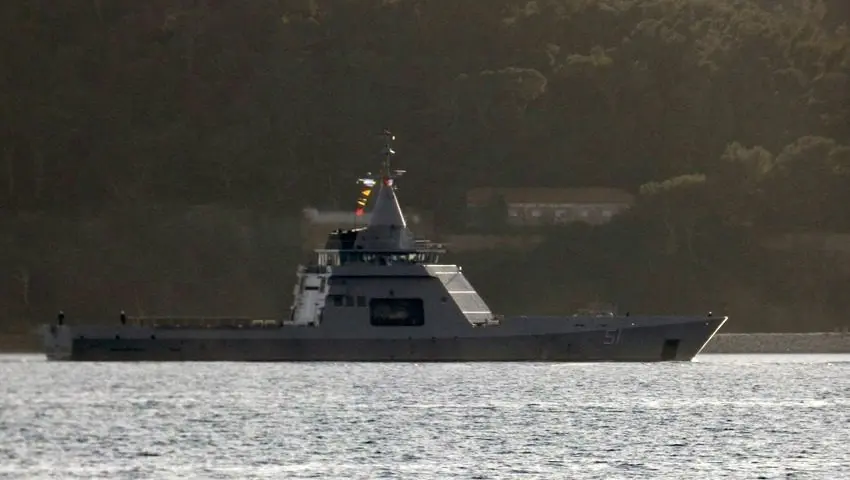Argentina, under the previous administration and through a State-State sale negotiation, completed the purchase of four Gowind Class OPV units of the most important shipbuilder in Europe: Naval Group. In March of last year, Zona Militar was able to attend Colombiamar 2019, held in Cartagena de Indias, and chat with the company’s Vice President for Latin America; and observe the Gowind Class OPVs that Naval Group promoted at the fair.
These OPV Class Gowind, have a displacement capacity of 2500 to 3000 tons, with anti-aircraft (AAW), anti-surface (ASW) and anti-submarine (ASuW) capacity, equipped with MU90 and CANTO-V, and operated with the latest technology in Setis combat systems, technology that was already tested in combat aboard the French Navy FREMM type frigates, which is also interoperable with NATO systems.
According to what was declared by the Vice President, Olivier Michel, this version would have been a bestseller and acquired by the Marinas of Egypt and Malaysia, among other regional stakeholders. However, the Argentine Navy was for the smaller version (1500 tons of displacement), and also made the decision to not install the Exocet missiles during its manufacture, knowing that the possibility existed.
On the other hand, the first delivery of OPV (offshore patrol vessel) Gowind Class «ARA Bouchard», former L’Adroit of the French National Navy, which arrived at the port of Buenos Aires at the beginning of the month, would have arrived without the caliber cannon 30 mm from the Leonardo company with local control and Electro Optical Director (EOD). According to a source from the Navy consulted by Zona Militar, the cannon will arrive in a container at Mar del Plata, where the ocean patrol will be deployed, and it will be the same construction company who will be in charge of placing it. The estimated date for the termination of the OPV’s artillery work, is April.
The ARA Bouchard will be gunned with the 30 mm gun in Mar del Plata by the Naval Group in April. It also has 2 machine guns (12.7 mm) controlled manually.
The OPVs Gowind will be mainly destined to maritime surveillance tasks, with the objective of protecting and controlling the living and non-living resources of the maritime platform that comprises the Argentine Exclusive Economic Zone (ZEE Argentina) that houses a great wealth of fish and is seriously violated by the practice of illegal fishing that not only continues to cause millions of losses to the country, but also destroys the ecosystem and is not sustainable over time, which could be highly detrimental to Argentina’s economic future.
Therefore, the acquisition of these OPVs pose an immediate response to the immense problem facing the Navy today. However, much of the Argentine territory borders the South Atlantic Sea, so the incorporation of four new units helps to alleviate the situation, but does not offer a long-term solution. The territory to be covered is vast.
Wherewith, and keeping in mind the clear objective of exercising sovereignty, the decision to not install the Exocet missiles raises questions, as well as certain doubts about the official presentation to the country and to the world of the new system, without its main armament. Having the Exocet missiles could have given it greater exposure of the Navy at sea.
The purchase of the OPV is important to retrofit the force, that is not questioned, since it allows it to maintain the capacity of protection and control, and it helps to reinforce it, but I consider that in a world where the economy looks towards the sea, and the most powerful countries in the world invest large portions of their money to strengthen their Navy, the question remains hanging on how much defense is enough to protect the Argentine sea?, and if Argentina is doing enough to prepare itself for the future scenario of maritime competition which is being developed in the international system, as we speak.
Keep reading: Apollo 2020 and the Navy that never was









